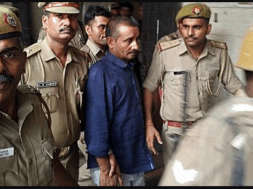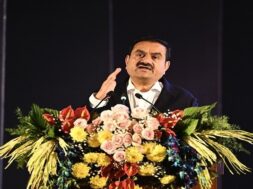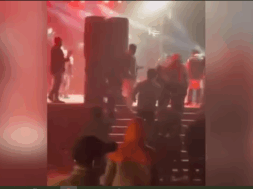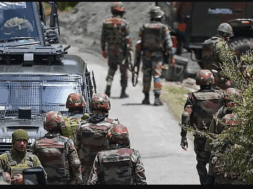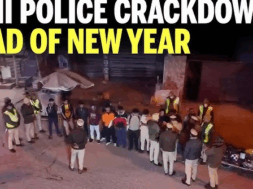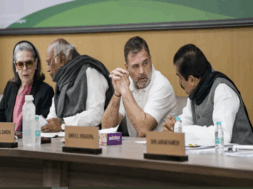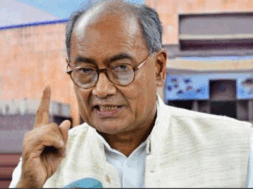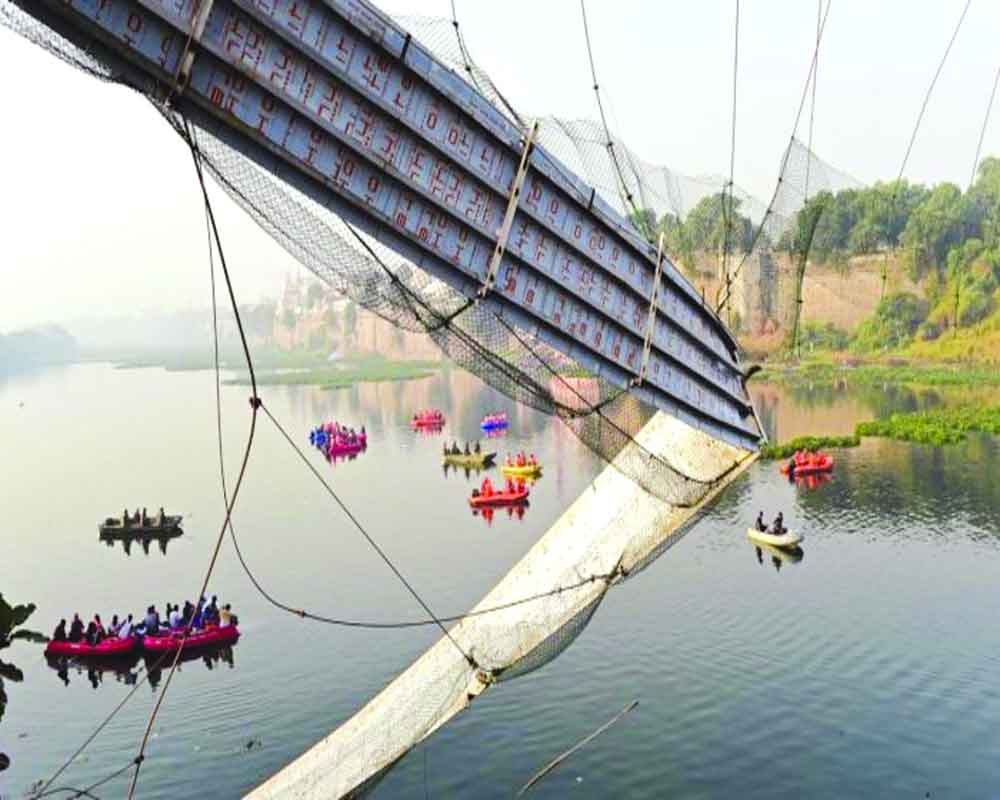
Manas Dasgupta
NEW DELHI, Nov 2: The police have pointed out a series of lapses on the part of the contractor of the Morbi cable bridge repairing which has taken a toll of at least 135 lives. And one of the biggest charge for which the local civic authorities also have to share the blame, the company which was given the contract for the repairing and maintenance of the British era foot bridge was “not qualified” for the job and the sub-contract it had passed on to another little-known small local company did not even carry out any repairing work except only re-painting the footbridge and the cables.
This was told by the Gujarat police to a court in Morbi on Wednesday while seeking remand of the staff of the contractor company arrested on the charge of culpable homicide not amounting to murder.
The Chief Judicial Magistrate of Morbi M.J. Khan remanded four of the arrested accused — two managers of the OREVA Group and two sub-contractors who had repaired the bridge — in police custody till November 5. The court remanded five other arrested men, including security guards and ticket booking clerks, in judicial custody as police did not seek their custody, prosecutor H.S. Panchal said.
Police had on October 31 booked nine persons under Indian Penal Code Section 304 (culpable homicide not amounting to murder). The four accused remanded in police custody were OREVA managers Dipak Parekh and Dinesh Dave, and repairing contractors Prakash Parmar and Devang Parmar, hired by the OREVA Group.
Citing a Forensic Science Laboratory (FSL) report, Mr. Panchal told the court that forensic experts believed the main cable of the bridge snapped because of the weight of the new flooring. “Though the FSL report was presented in a sealed cover, it was mentioned during the remand plea that cables of the bridge were not replaced during the renovation and only flooring was changed…the weight of the bridge increased due to the four-layered aluminium sheets for the flooring and the cable snapped due to that weight,” Mr. Panchal told reporters.
The court was also informed that both the repairing contractors were “not qualified” to carry out such a work. “Despite that, these contractors were given the bridge repair work in 2007 and then in 2022. So the accused’s custody was needed to find out what was the reason for choosing them and at whose instance they were chosen,” the prosecutor said.
Another serious charge made against the Oreva Group, which was given the 15 years contract for the repairing and maintenance of the century and half old suspension bridge was that the materials used for the renovation were “substandard” and the entire structure was vulnerable.
There was no structural audit of the 143-year-old bridge before its renovation. Many of the cables of the suspension bridge were rusty, including the part where it broke. The incident would not have happened had the cables been repaired.
As part of the renovation, only the platform was changed and not the cables. Materials used for this increased the weight. The contractors hired for the renovation job were not qualified for such work. The subcontractor only painted and polished the cables for renovation. The same firm, although unqualified, had been given a contract in 2007 as well and the police now want to find out the truth behind the report that the contractor and the sub-contractor were backed by a top level local BJP leader.
The prosecution also pointed out that the bridge was opened to the public without determining how many people it could carry nor any Government approvals taken before it was reopened. There was no emergency rescue and evacuation plan. There was no lifesaving equipment nor lifeguards. There was no documentation of the repair work, nor was it inspected by experts.
It pointed out that the company had time till December to complete the renovation, but they opened the bridge much earlier, anticipating a huge crowd in the festive season of Diwali and Gujarati New Year to earn some quick money.
The company which was given the authority to sale tickets to the visitors to the cable bridge did not bother to restrict over-crowding keeping with the bridge’s holding capacity. According to experts, the bridge was designed to carry the weight of a maximum of 125 people but at the time of the accident there were no less than 400 people on the narrow footbridge which may have contributed in snapping of the cables drowning the people on the bridge in the Machchhu river flowing underneath.

